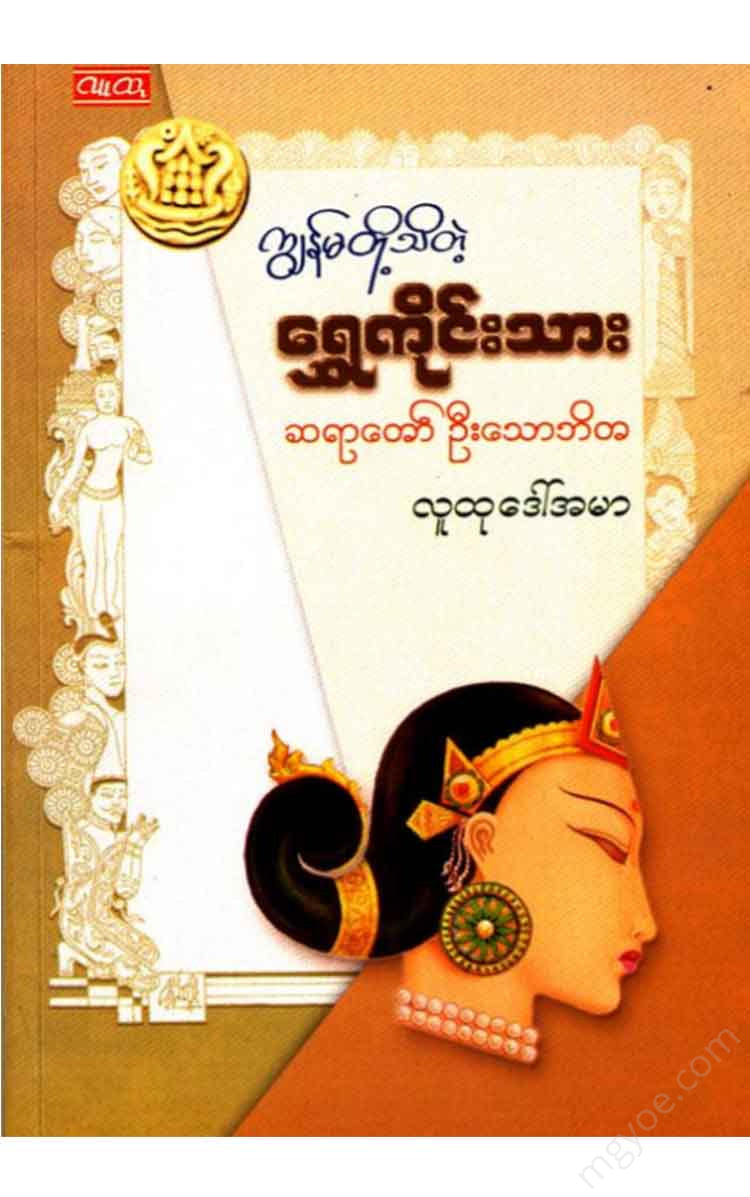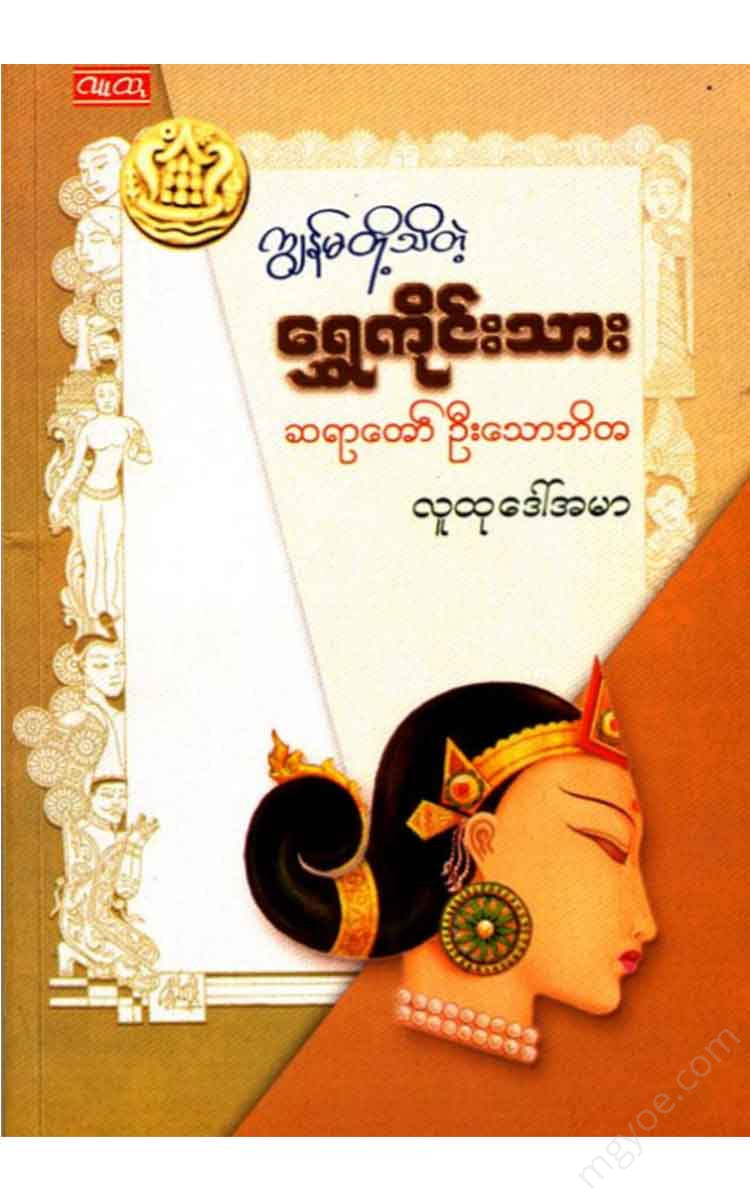Other Websites
Public Daw Ama - The Golden Dragon We Know
Public Daw Ama - The Golden Dragon We Know
Couldn't load pickup availability
Artist, photographer, and writer Shwe Kaing Thar
He who tried and succeeded.
A true winner of hard work and dedication, or a golden boy.
I always saw U Pyin Sin U Sobhita. It wasn't until recently that I became close to U Sobhita, a Shwe Kaing-thar who won the Literary Award. Long before the war, I had been acquainted with Ko Tun Hlaing from the Kyaw Sa Office, even before the publication of the magazine.
At that time, if you asked for a section in a magazine that was relevant to you, “What would you do?” the patient Ko Tun Hlaing would prepare a complete, well-founded article with relevant photographs and drawings, and it would arrive within a few days. In the press, if you write an article and submit it, the editors would not only correct the spelling, grammar, and text, but also find suitable photographs for the article. They would send the manuscript to an artist and ask him to draw it. Then they would send it to the typesetting department. Now, for Ko Tun Hlaing or U Sobita’s articles, he would not have to pay a single drop of the editor’s ink on his copy, nor would he have to worry about the photographs or drawings. U Pyin Sin would just block it and not take it. He would come with photographs that he had taken for his article and drawings that he had drawn himself. So reliable U Sobhita. Whether you look at his photo or have seen him in person, you would not normally find him hateful, loving, or admirable, but those who are close to him and know him well cannot help but admire, respect, or praise him. U Pyin Sin has unique qualities that are more than anyone else. These are patience, perseverance, and consistent dedication to his passion.
If you study U Pyin Sin's life, what I have written will become clear.
On the second day of the waning moon of the 12th month of the lunar month of 1274, the Burmese medicine man U On and Daw Mya of Tagaung, Sagaing, gave birth to their fourth son, Ko Tun Hlaing. He had six siblings and was only a Burmese medicine man from a small town, so it was difficult to give Ko Tun Hlaing a proper education. He was sent to a Burmese school, but if the teacher had not paid for his tuition in the seventh grade, Ko Tun Hlaing would not have passed the seventh grade exam. When he passed the seventh grade, he could no longer continue his studies and had to leave home. After a while, he had to attend the Burmese Teacher Training College near Pyinmana, which received a scholarship, to become an ETC (Elementary Teacher Training College).
Public lady
Ko Tun Hlaing, who has been very shy since childhood and is now a monk, only took a Burmese teacher training course to earn a living for the children of the poor. He dared not to be a teacher.
I didn't have the courage to teach in front of students. Therefore, even though I passed the teacher training course, I never worked as a teacher for a single day.
“Because I believe that the subject of dress code among the Burmese cultural topics that need to be researched and written about is a topic worthy of encouragement,” the Literature Museum decided and awarded U Sobhitta, who was the first to win the 100-wi literary prize, only passed the seven-grade Burmese language and the ETC lower-level teacher exam, which is considered a milestone in modern education. Few people would believe it. However, the truth is that U Pyin Sin does not know a single word of English.
If you believe that art and U Sobhita are hereditary, then you can refer to birth and instinct. U Sobhita's grandfather was a Burmese painter and sculptor, and his father was also fond of sculpture. U Pyin Sin was fond of painting since he was a child, and in his free days, he used to spend his time with his childhood friends visiting the ancient pagodas in the Sagaing Hills, where he would spend time looking at and drawing lion statues, and copying and drawing paintings in the caves inside the pagodas.
When he passed the seventh grade and could not continue in any school, he learned how to draw and take photographs from U Ba Than in Sagaing, who is now an art lecturer at the Mandalay Teachers' Training College. He also taught him medicine, astrology, and astronomy.
U Pyin Sin had been reading and studying Burmese literature and the Pitaka literature from the books he had at home since he was a child. Soon after becoming a teacher, when he was offered a job as a painter at the Kyaw Sa Department in Mandalay, he was given the opportunity to work on his hobby of collecting and memorizing literature. Because he had to work at the Kyaw Sa Department, he moved from Sagaing to Mandalay to live with his relatives, lawyer U Bo Than, and during that time he was given the opportunity to search and search for the books and manuscripts of U Bo Than's grandfather, Moe Ta Wan Tay Min, at will. He copied the books he liked for three years to keep for himself. Then he began writing articles.
While working as a painter at the Royal Office from 1930 until the war, I met all three Royal Office officials, including the late Royal Office Minister Sein Kho, Royal Office Minister U Mya, Royal Office Minister Du Raizel, and Royal Office Minister U Lu Pe Win.
With a seven-kyat camera and a photographer, U Pyin Sin, who was a photographer while still a man, was very fond of taking pictures, and he took a lot of pictures for fun. Although he did take pictures, he could not spend a lot of money on a camera, a roll of film, and a roll of film like the rich amateur photographers of today. He had to work hard and support his parents without taking care of his children. However, before the war, among the groups that used to give out amateur photography awards, he had won one prize from the Amateur Photographer of Burma (Kodak) competition, and two prizes from the Illustrated Weekly of India, a large magazine in India. He also won eight prizes in the Dagon photography competition, and Ko Tun Hlaing himself was responsible for submitting the photo comparisons for the journal Kyaw. Now, after the war, he has given up because he feared that holding a camera while wearing a monk's robe would be a disgrace.
The antiquities collector, U Sobita, is known as Shwe Kaing Thar, but few people know that Shwe Kaing Thar is also the author of the book 'Mandalay'. U Pyin Sin was nicknamed "Not Su" because he was able to find any information his superiors wanted whenever he asked him, and he was called "Not Su". In addition to Shwe Kaing Thar, he also wrote articles on collecting knowledge under the pen name "Not Su".
U Pyin Sin said that he had been collecting antiques since he was a child. He has a small museum of his own, with a wide variety of antique coins, Burmese coins, medicine jars, and medicine cans. He has also collected stamps for many years, so U Pyin Sin's album of stamps is quite complete. He not only meticulously collects and stores old books, but also organizes them in a way that is unbelievable and surprising.
When the book of the Sinyin Htoo Kyaw was born, there was a war, and Ko Tun Hlaing and I were separated for a while. During the war, we formed the Kapaing Asian Youth, and Ko Tun Hlaing met again as the intellectual leader of the famous Sagaing Mountain Asian Youth.
While hiding in a cave, amidst the bombs, machine guns, and mortar fire, Ko Tun Hlaing completed and wrote this award-winning book, The Book of the Law
However, due to paper and block problems, and financial difficulties (I cannot be held responsible for any losses incurred by printing this book), his manuscript did not become a book and was only published as a book last year.
After Ko Tun Hlaing converted to monastic life, I will write about a few words that U Hla, who was once a monk, said, in a humorous and true way. “I begged U Kulina (writer Min Shin Naung) and Ashin Nya Nissara (writer Ko San Tun) not to go out, but they couldn’t. U Pyin Sin, who was a monk in his human life, lived in the same way as a monk, so he didn’t wear a robe, and he couldn’t go out and say, ‘U Pyin Sin,’” he said.
Even in his childhood, Ko Tun Hlaing did not smoke, did not eat betel nut, and did not ride a bicycle because he could not walk. He did not have children and did not take a wife, but he worked hard to support his old mother all his life, and he was also surrounded by his sons, wives, and brothers. I once asked U Pyin Sin why he wore a robe. “I had the desire to wear a robe since I was about 14 years old, and I only succeeded when I was 30. Since I was young, I memorized the Patimauk and other monks. When I ate, I also practiced eating like a monk with my heart. My mother scolded me at dinner and said, ‘I should not eat like everyone else, so I ate like a monk,’” U Pyin Sin once said.
It is known that he left Asia in 1305, the Japanese era, and became a monk at the Sagaing Mountain Monastery.
Coin history
One of the books that U Pyin Sing has written and completed is the “Myanmar Coin History” book, which is said to be twice as long as the current book on the formation of the Sine Dynasty. He also said that it is written in detail with solid evidence, starting from the Han and Pyu periods to the Sili Mu that is used today. It is known that, like the formation of the Sine Dynasty, it is written separately for each era, and U Pyin Sing, who does not speak English, said that his book also includes references to Arthur Fawcett’s book. I asked U Pyin Sing if he had all the coins in the book, and he collected them. Yes. He said that he looked at them and wrote them.
In addition to the history of coins, he is still writing three or four other books that he does not want to mention, he still regularly attends the monks' daily prayer service, and he still regularly writes articles for the public journal every month.
Therefore, if you study U Sobhita closely, you will see that U Sobhita, who was so poor that his parents could not send him to school until the seventh grade, and U Sobhita, who was poor and could not learn English, tried his best all his life, like a tortoise chasing a hare. He is still trying patiently. In the future, he will continue to explore and study his passion for art throughout his life, and will continue to develop his talents.
Public Journal No. (30) 1952, October

